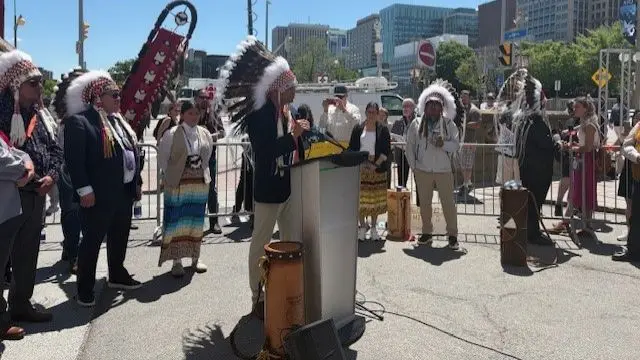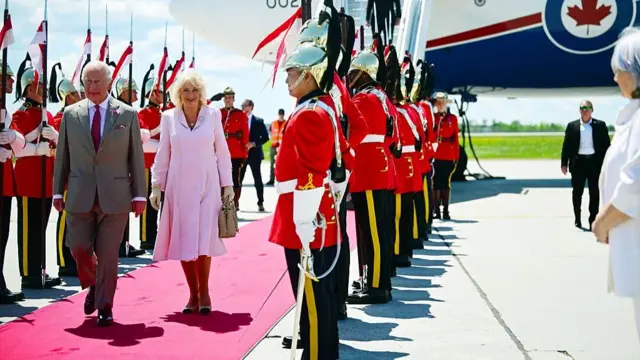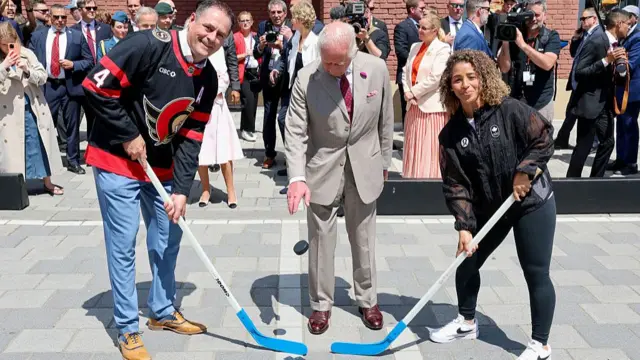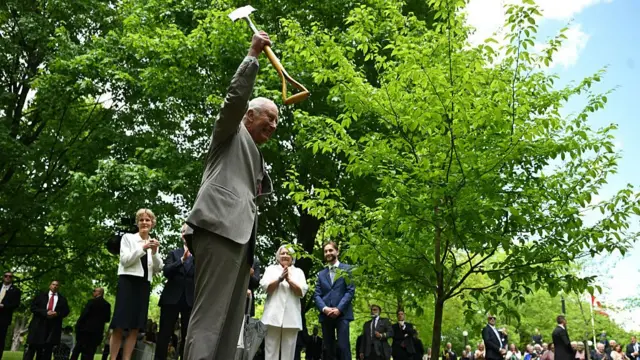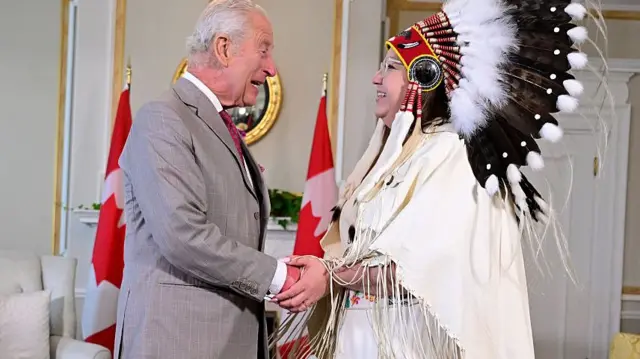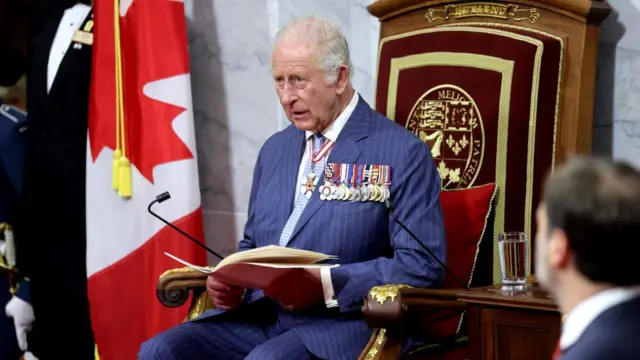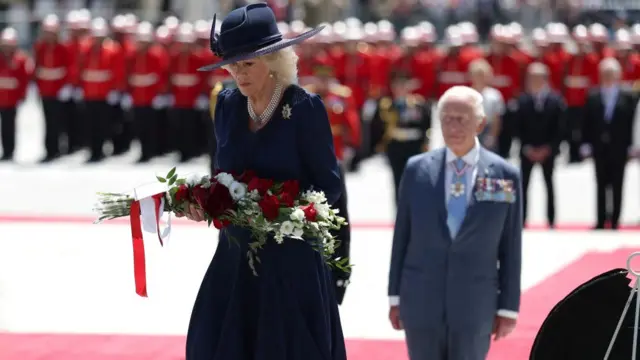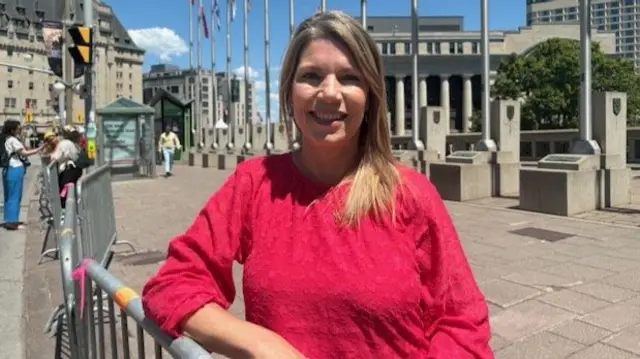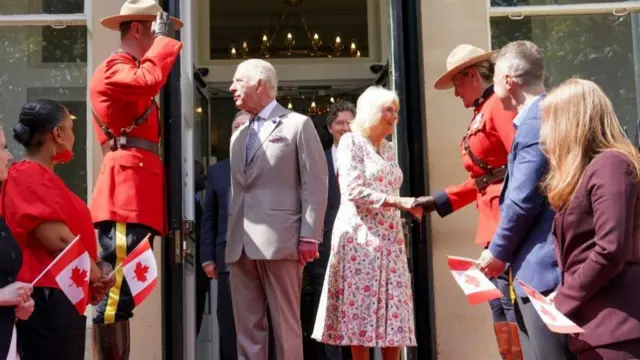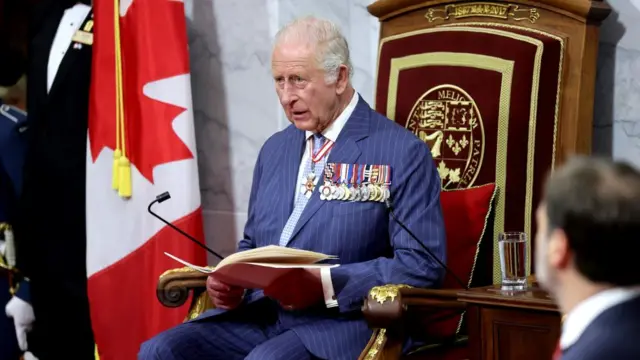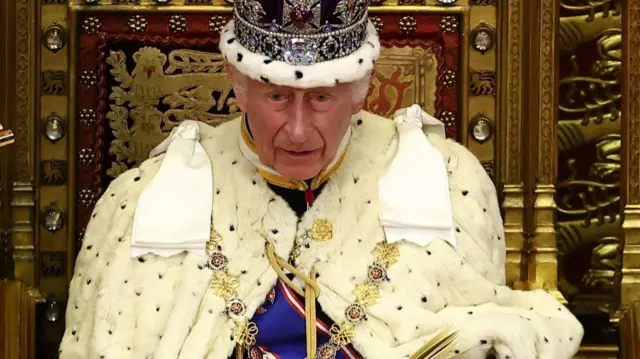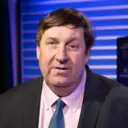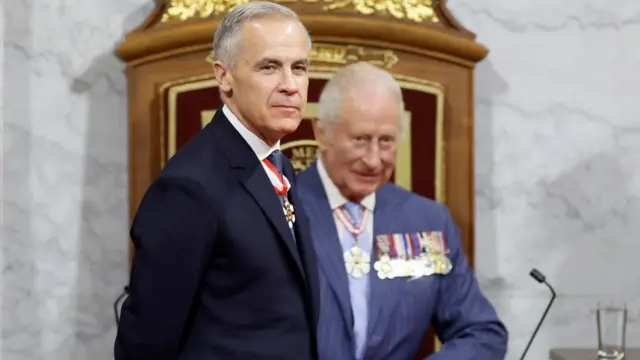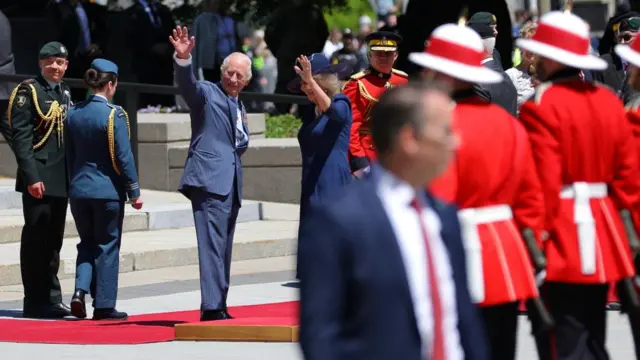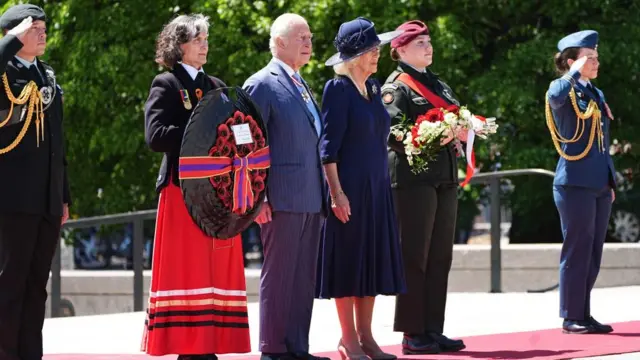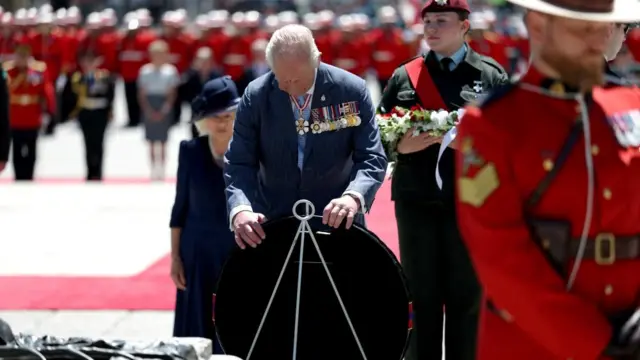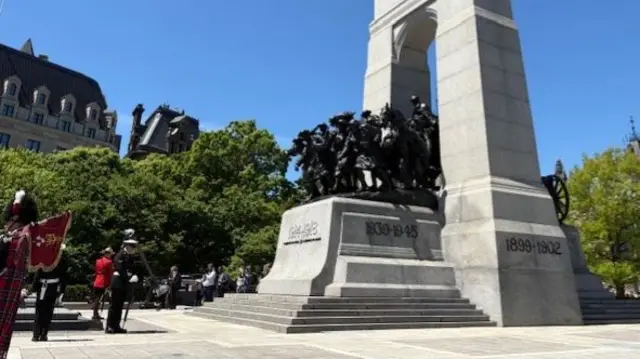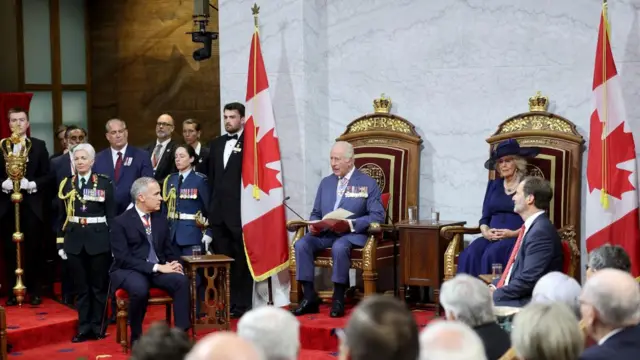King flies back to UK after PM Carney deems visit 'successful'published at 19:05 BST 27 May
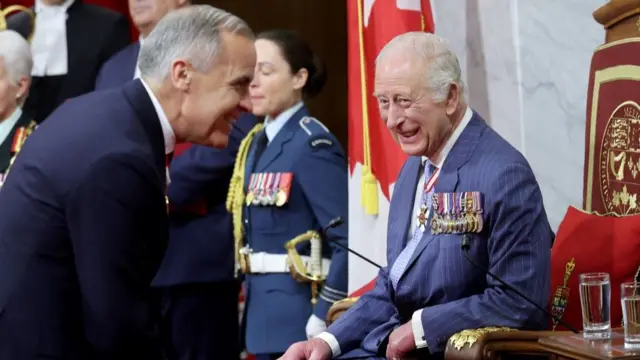 Image source, Reuters
Image source, ReutersKing Charles and Queen Camilla's visit to Canada has come to a close, which means we'll be ending our live coverage.
The trip and throne speech was a symbolic sign of solidarity from King Charles, our Royal correspondent Sean Coughlan writes, at a time where there has been such pressure from US President Trump.
The King spoke of a new relationship between Canada and the US, rooted in "mutual respect" that will benefit "both nations".
And a theme of Canadian sovereignty was weaved throughout, with the King concluding the speech quoting the national anthem: "The True North is indeed strong and free!"
For more on the King's Speech from the Throne:

